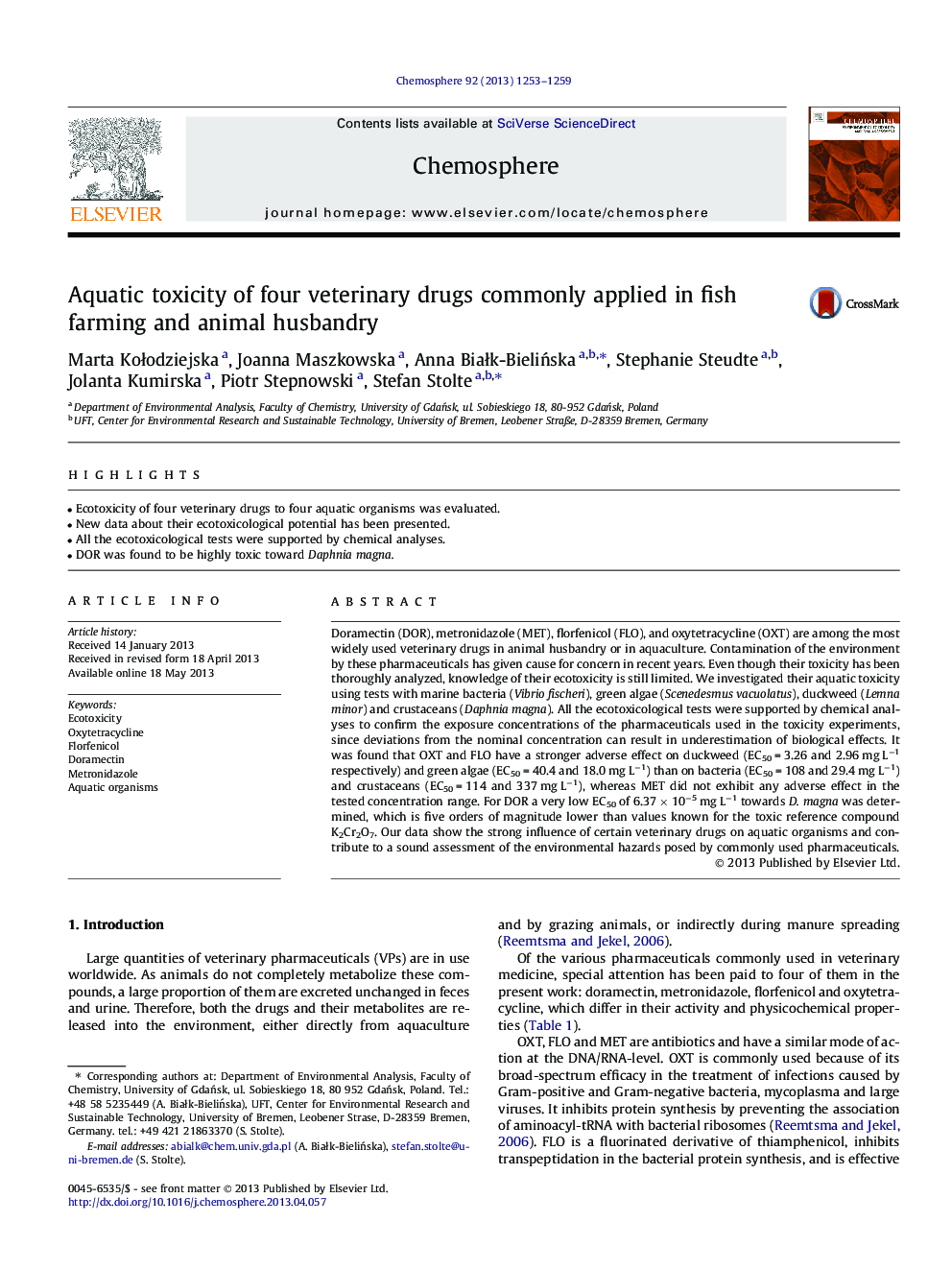| Article ID | Journal | Published Year | Pages | File Type |
|---|---|---|---|---|
| 6310651 | Chemosphere | 2013 | 7 Pages |
â¢Ecotoxicity of four veterinary drugs to four aquatic organisms was evaluated.â¢New data about their ecotoxicological potential has been presented.â¢All the ecotoxicological tests were supported by chemical analyses.â¢DOR was found to be highly toxic toward Daphnia magna.
Doramectin (DOR), metronidazole (MET), florfenicol (FLO), and oxytetracycline (OXT) are among the most widely used veterinary drugs in animal husbandry or in aquaculture. Contamination of the environment by these pharmaceuticals has given cause for concern in recent years. Even though their toxicity has been thoroughly analyzed, knowledge of their ecotoxicity is still limited. We investigated their aquatic toxicity using tests with marine bacteria (Vibrio fischeri), green algae (Scenedesmus vacuolatus), duckweed (Lemna minor) and crustaceans (Daphnia magna). All the ecotoxicological tests were supported by chemical analyses to confirm the exposure concentrations of the pharmaceuticals used in the toxicity experiments, since deviations from the nominal concentration can result in underestimation of biological effects. It was found that OXT and FLO have a stronger adverse effect on duckweed (EC50 = 3.26 and 2.96 mg Lâ1 respectively) and green algae (EC50 = 40.4 and 18.0 mg Lâ1) than on bacteria (EC50 = 108 and 29.4 mg Lâ1) and crustaceans (EC50 = 114 and 337 mg Lâ1), whereas MET did not exhibit any adverse effect in the tested concentration range. For DOR a very low EC50 of 6.37 Ã 10â5 mg Lâ1 towards D. magna was determined, which is five orders of magnitude lower than values known for the toxic reference compound K2Cr2O7. Our data show the strong influence of certain veterinary drugs on aquatic organisms and contribute to a sound assessment of the environmental hazards posed by commonly used pharmaceuticals.
